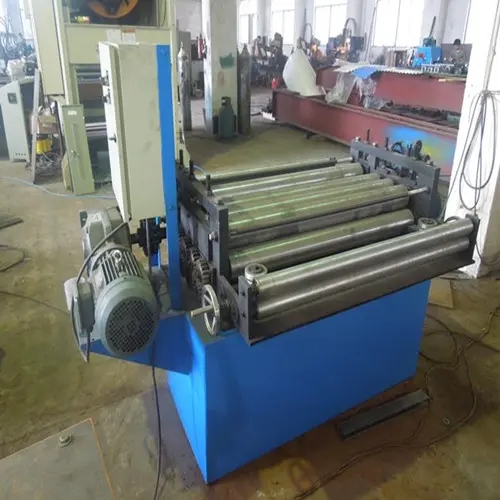
Understanding Plate Shearing Machines An Overview
Plate shearing machines are essential tools in the metalworking industry, specifically designed for cutting large sheets of metal into smaller, manageable pieces. These machines operate using powerful blades that can slice through various materials, including steel, aluminum, and other metals. In this article, we’ll explore the mechanisms, applications, and benefits of using plate shearing machines.
The Mechanism of Plate Shearing Machines
At the core of a plate shearing machine is its cutting mechanism. Typically, these machines feature a pair of blades – a fixed upper blade and a movable lower blade. When activated, the upper blade descends in a manner that creates a shearing action against the lower blade, effectively slicing through the plate. The configuration of the blades plays a significant role in determining the machine’s cutting capability, with thicknesses often ranging from a few millimeters to several centimeters, depending on the specific model and design.
The shearing process can be manual or automated. Manual machines are operated by an individual who physically controls the blade movements, while automated systems utilize hydraulic or electronic controls for precision cutting. Hydraulic shears, in particular, offer enhanced cutting force and adaptability for thicker materials, making them a popular choice in heavy industries.
Applications of Plate Shearing Machines
Plate shearing machines find applications across a wide array of industries. In manufacturing and fabrication, they are essential for producing parts that require specific dimensions for assembly. Industries such as automotive, aerospace, and construction rely on these machines to create components like brackets, frames, and bulkheads from large metal sheets.
In metal recycling operations, plate shearing machines are pivotal in processing scrap metal. They can efficiently reduce large sheets of metal into smaller sizes, making it easier for further handling, sorting, and recycling. In this context, the shearing machine not only helps conserve resources but also aids in reducing environmental waste.

Moreover, these machines play a critical role in the production of metal signage and custom art pieces. The precision and clean edges achieved through shearing allow for intricate designs that would be difficult to attain with other cutting methods.
Benefits of Using Plate Shearing Machines
One of the primary benefits of plate shearing machines is their efficiency. They significantly reduce the time and labor required to cut metal sheets compared to manual methods. This efficiency translates into cost savings for businesses, making it a worthwhile investment for many metalworking operations.
Precision is another major advantage. Modern shearing machines come equipped with advanced technology that allows for high-precision cuts. This capability minimizes waste and ensures that components fit together as intended during assembly.
In addition to efficiency and precision, the versatility of plate shearing machines cannot be overlooked. These machines can handle a variety of materials and thicknesses, making them suitable for diverse applications within different industries. The adaptability of shearing machines also means they can be modified or upgraded to meet changing production needs.
Conclusion
Plate shearing machines are indispensable assets in the metalworking industry, providing efficient, precise, and versatile solutions for cutting metal sheets into manageable sizes. Their wide range of applications, from manufacturing to recycling, underscores their importance in modern industrial processes. As technology continues to advance, we can expect these machines to become even more efficient, further enhancing their role in manufacturing and fabrication. Investing in high-quality plate shearing machines can lead to improved productivity, cost savings, and enhanced product quality, making them a valuable addition to any metalworking operation.